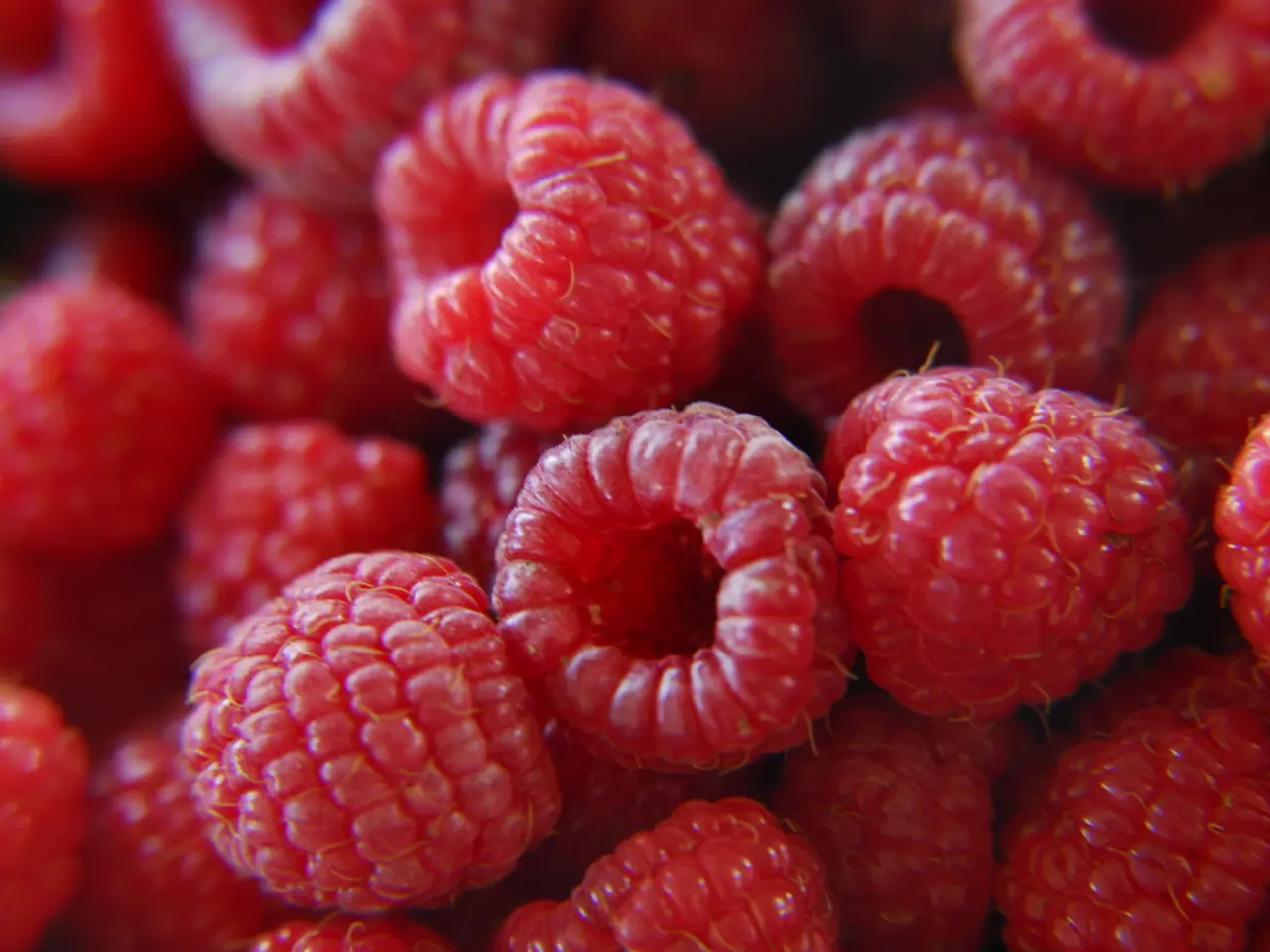Fungal Blight Affecting Raspberries and Blackberries
In the world of raspberries, blackberries, and other brambles, the anthracnose disease can pose a significant threat. This article outlines the key control methods to combat this disease, focusing on timely fungicide applications, cultural practices, and integrated pest management.
Anthracnose first makes its appearance in the spring, as small, purplish spots on young shoots. As it progresses, dark colored specks, or fungal fruiting bodies, develop in circles on the gray bark, eventually growing to become ash gray in the center with slightly raised purple margins.
The primary weapon against anthracnose is the use of copper-based fungicides. These effective agents prevent spore germination and infection, with applications typically recommended starting at early to mid-bloom and continuing every two weeks post-bloom if anthracnose has been a problem. It's important to note that myclobutanil and sulfur are not effective against anthracnose in brambles, making copper fungicides the preferred choice.
Timing is crucial in the fight against anthracnose. Fungicide sprays should begin at early bloom stages and continue with cover sprays every two weeks until harvest, aiming to reduce disease severity.
Cultural practices also play a vital role in anthracnose control. Removing fruiting canes after harvest and pruning out infected plant parts can help reduce inoculum sources for the next season. Good air circulation and avoiding overhead irrigation can also limit disease development.
Integrated pest management comes into play by avoiding the use of insecticides during bloom to protect pollinators and following label directions carefully to rotate fungicides and prevent resistance.
In summary, an effective control strategy for anthracnose on brambles combines copper fungicide applications timed around bloom, regular post-bloom sprays, and good cultural hygiene practices such as pruning and sanitation. This comprehensive approach helps to minimise the damage caused by anthracnose, which can be severe, particularly for black and purple raspberries and susceptible varieties of red raspberries throughout the United States. Anthracnose sometimes attacks the leaves, causing some leaf drop, and may kill canes or weaken them, preventing their survival in the winter. The disease also goes by other common names, including "cane spot" and "gray bark."
The scientific study of anthracnose in brambles is crucial for finding effective pest management strategies. In addition to timely fungicide applications, understanding medical-conditions associated with chronic diseases like anthracnose can help promote health-and-wellness among farmers and their crops. Integrating nutrition, fitness-and-exercise, and overall wellness practices into pest management plans can lead to healthier plants and enhanced resistance to diseases like anthracnose. For instance, proper plant nutrition can strengthen a bramble's immune system, making it less susceptible to anthracnose attacks. In the pursuit of a holistic approach to pest management, combining traditional methods with science-based knowledge on health, nutrition, and fitness can lead to a more sustainable and productive harvest.




